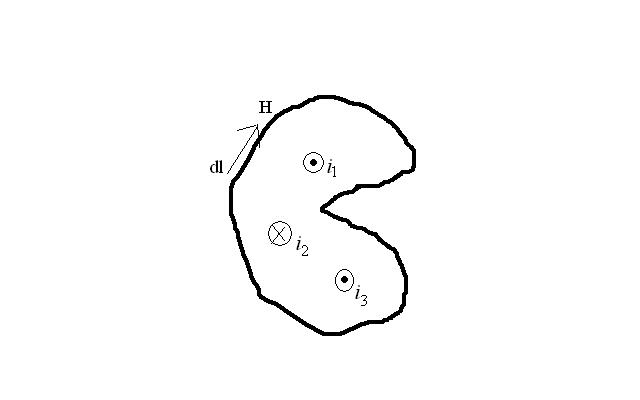Ampere's Law
When current travels through a conductive material it creates a magnetic field. The direction of the magnetic field can be determined by making a fist with your right hand and sticking your thumb out in the direction of the current. Then the direction your fingers curl is the direction of the magnetic field. This also works the other way, you could run current in a loop and curl your fingers in the direction of the current. Your thumb will then be pointing in the direction of the magnetic field.
This is the point at which Ampere's law becomes useful. The intensity of the magnetic field created by a current is found using this law. Ampere's law states that the sum of currents is equal to the line integral of the magnetic field intensity along a path that encloses those currents. <ref> Electric Drives (our textbook) p. 5-2 </ref>
For example: i1 - i2 + i3 = H
References
<references/>
comments
Isn't Ampere's law derived from Gauss's law?
Reviewers
Alex Roddy
Tim Rasmussen


